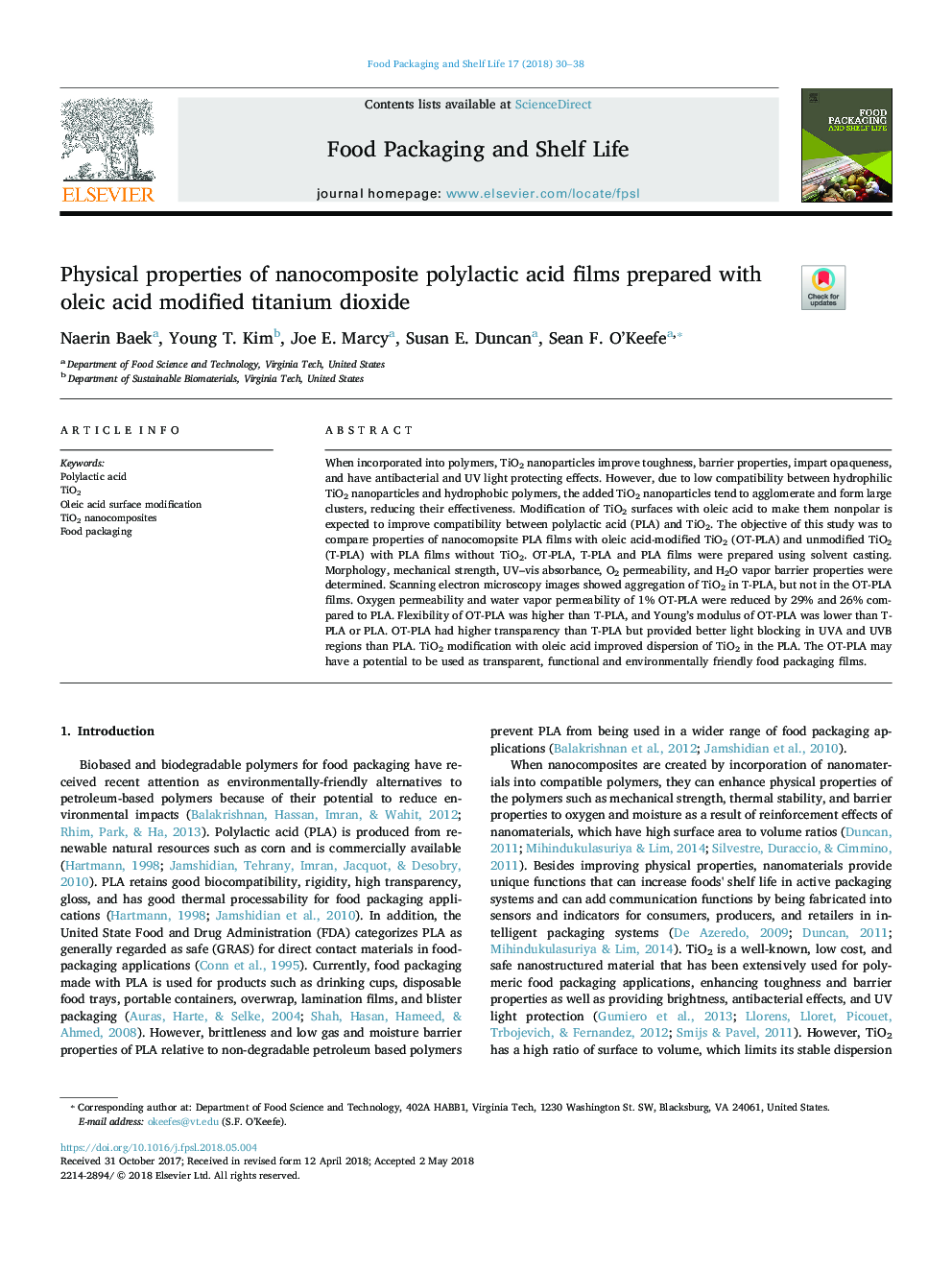| Article ID | Journal | Published Year | Pages | File Type |
|---|---|---|---|---|
| 6489088 | Food Packaging and Shelf Life | 2018 | 9 Pages |
Abstract
When incorporated into polymers, TiO2 nanoparticles improve toughness, barrier properties, impart opaqueness, and have antibacterial and UV light protecting effects. However, due to low compatibility between hydrophilic TiO2 nanoparticles and hydrophobic polymers, the added TiO2 nanoparticles tend to agglomerate and form large clusters, reducing their effectiveness. Modification of TiO2 surfaces with oleic acid to make them nonpolar is expected to improve compatibility between polylactic acid (PLA) and TiO2. The objective of this study was to compare properties of nanocomopsite PLA films with oleic acid-modified TiO2 (OT-PLA) and unmodified TiO2 (T-PLA) with PLA films without TiO2. OT-PLA, T-PLA and PLA films were prepared using solvent casting. Morphology, mechanical strength, UV-vis absorbance, O2 permeability, and H2O vapor barrier properties were determined. Scanning electron microscopy images showed aggregation of TiO2 in T-PLA, but not in the OT-PLA films. Oxygen permeability and water vapor permeability of 1% OT-PLA were reduced by 29% and 26% compared to PLA. Flexibility of OT-PLA was higher than T-PLA, and Young's modulus of OT-PLA was lower than T-PLA or PLA. OT-PLA had higher transparency than T-PLA but provided better light blocking in UVA and UVB regions than PLA. TiO2 modification with oleic acid improved dispersion of TiO2 in the PLA. The OT-PLA may have a potential to be used as transparent, functional and environmentally friendly food packaging films.
Keywords
Related Topics
Physical Sciences and Engineering
Chemical Engineering
Bioengineering
Authors
Naerin Baek, Young T. Kim, Joe E. Marcy, Susan E. Duncan, Sean F. O'Keefe,
